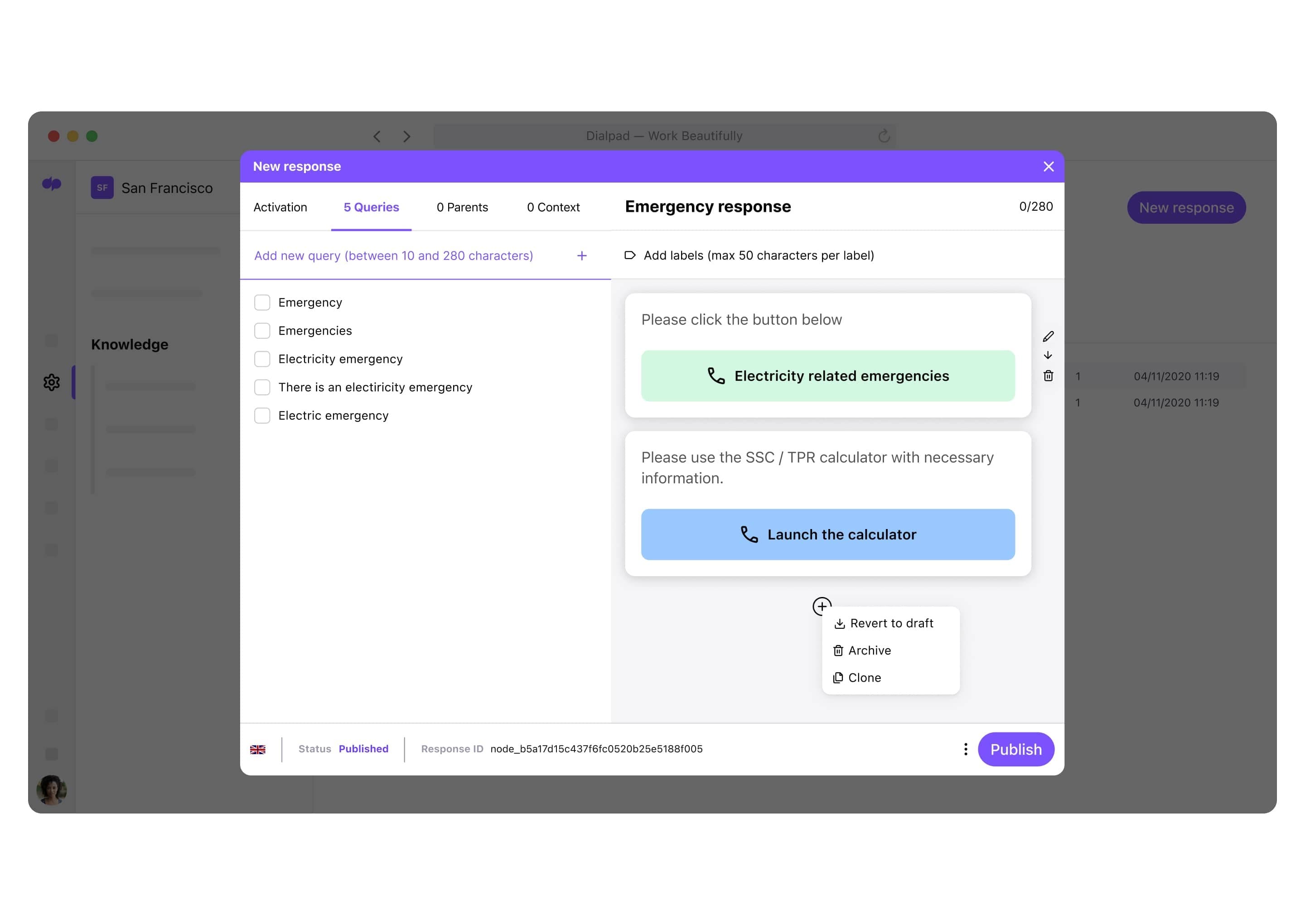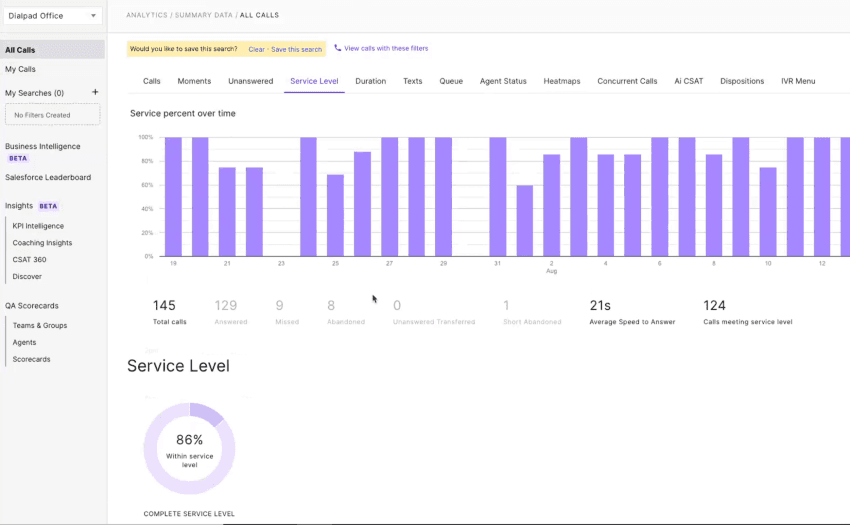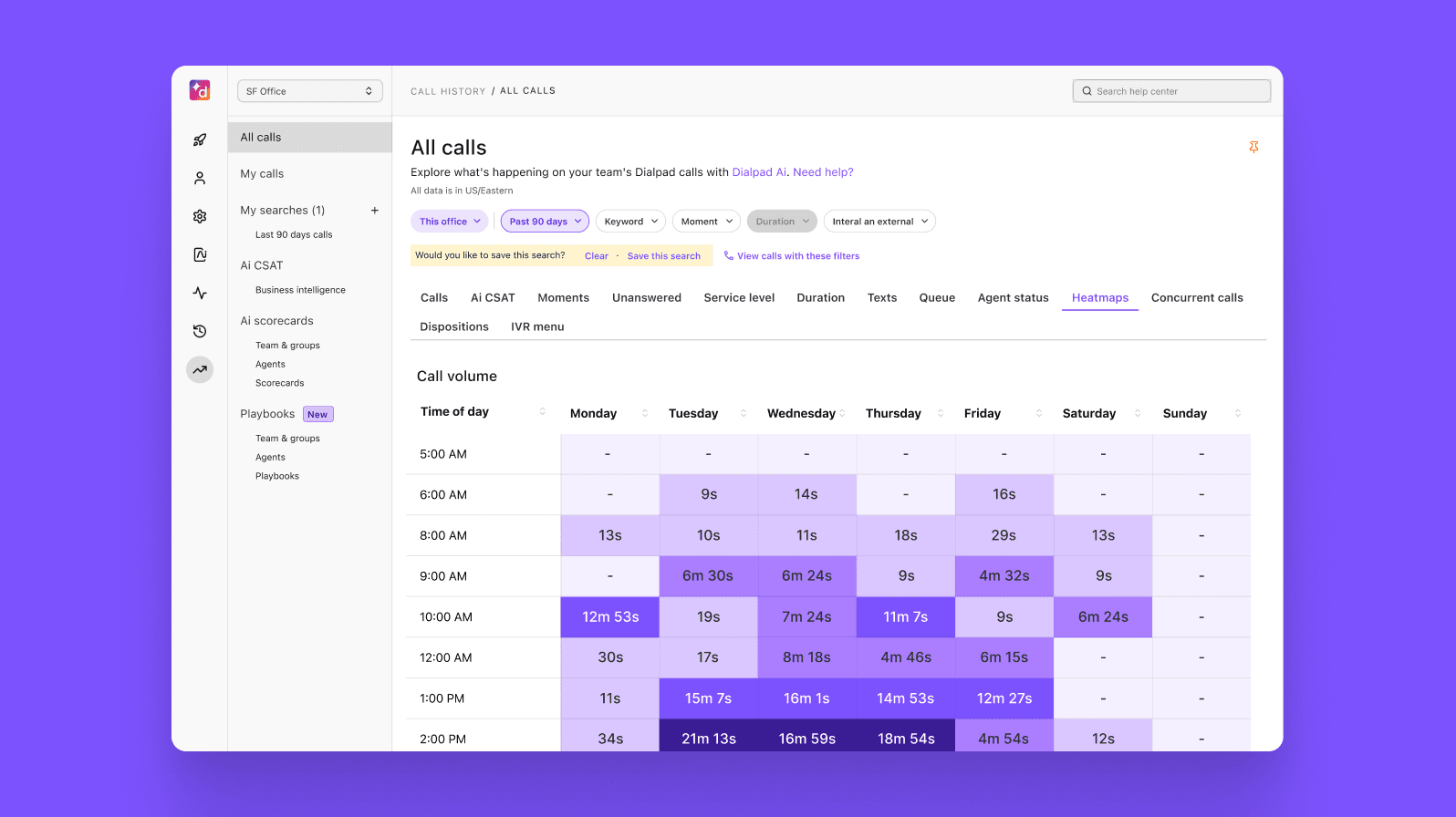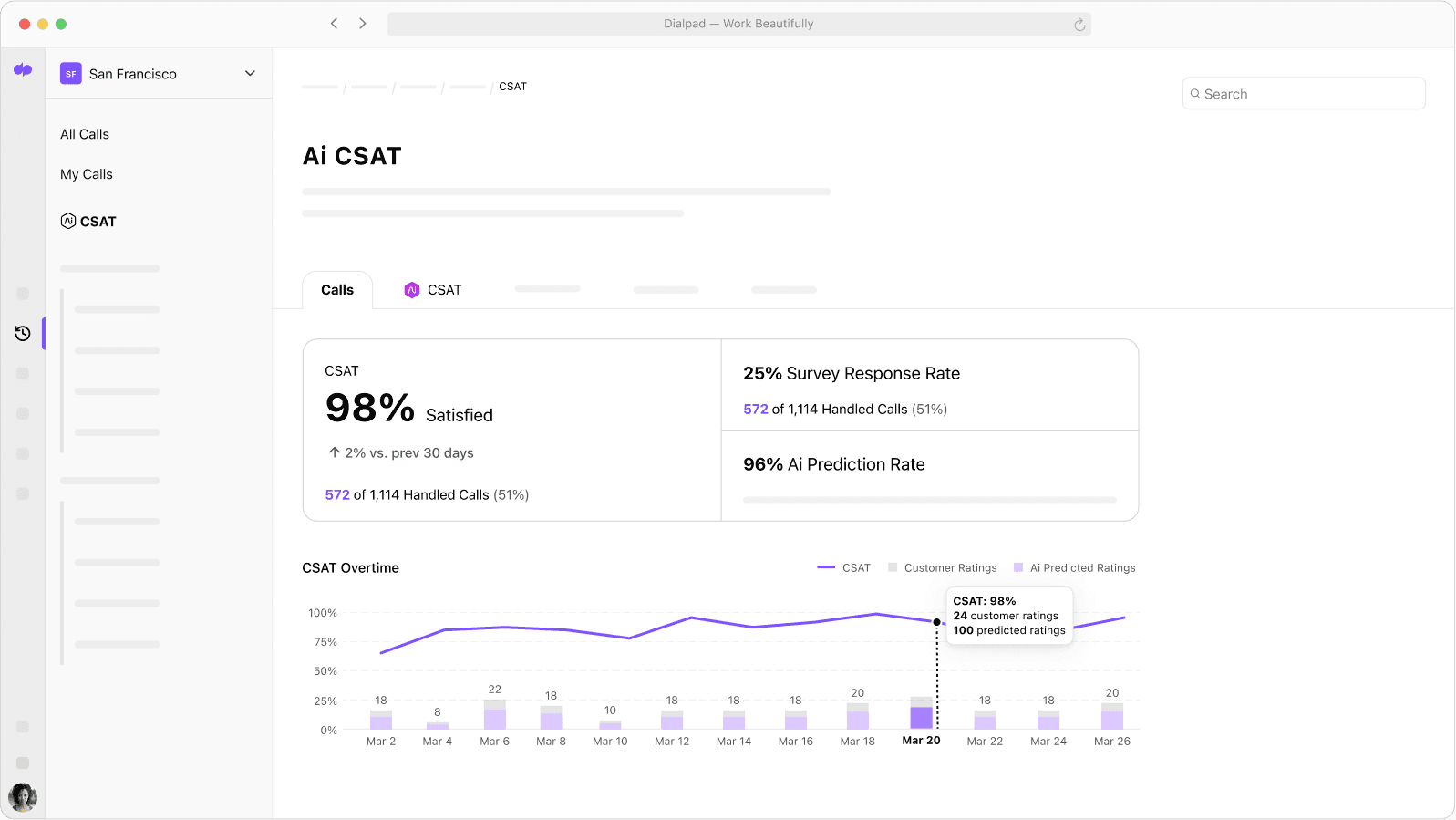Call centre cost breakdown: Advice from an expert

Senior Content Marketing Manager

Tags
Share
When setting up a call centre or contact centre, creating a manageable budget will help you stay on track to meet your business goals. What many don’t know is that when creating a call centre cost breakdown, early-stage strategy and setting a clear mission for your call centre is the best way to ensure effective financial decision-making.
While there are several necessary costs, being clear on your why will make it easier to quickly determine what “necessary” really means to you. That way you can identify what does and doesn't serve your purposes.
We spoke with Robby Paul, Executive Vice President of Contact Centre & Collaboration for IT services and consulting organisation, Anexinet—his years of experience in the industry have helped him hone his strategic budgeting skills.
“The most common mistake I see when people set up contact centres is that they don’t start with the end in mind; they just get started,” says Paul. “Ask yourself: ‘Am I actually accomplishing what I want to?’ Then make the spend.”
✨ Get the Contact Centre Playbook
Discover how the top companies in the world are building and operating their contact centres.
Costs you can expect
There are several categories you’ll need to consider when trying to start up a cost-effective in-house or outsourced call centre. While it’s near-impossible to provide benchmark figures without knowing a series of specifics, here are some areas where you might expect to spend:
Technology platform:
You’ll need to select a platform through which to conduct your business—deciding which features you need to serve your contact centre's purpose will help you decide on the right technology relationship. This is an ongoing cost.
Telecommunications costs:
All the hardware and software required to do the job. This is an ongoing cost, as technology changes and your centre scales. Some rely on
-based telephony solutions, although that’s being replaced by cloud-based Contact Centre as a Service (
) platforms.
👉 Dialpad tip:
CCaaS platforms like Dialpad will price by the number of users, with discounts if paid annually. This allows you to easily scale your communications solution up or down if needed. If you decide to add more users midway through the year, many CCaaS service providers will allow you to prorate the cost.
Labour:
Your contact staff, and your biggest expense (see note below for further considerations). This includes the hourly rate for part-time reps, the average salary for FTE, and any bonuses. Labour costs would also depend on location: salaries in the Philippines and salaries in North America have different economies of scale. This is an ongoing cost.
Consulting costs:
Pre- or post-implementation consulting can help you identify and understand your business needs to best position your call centre or contact centre to succeed—might be a nice-to-have, and can be quite costly. It’s usually a one-time cost but depends on the consultant’s pricing structure.
Integration expenses:
If you’re trying to create a frictionless experience for your clients, you’ll need to integrate multiple areas of data, and sometimes connect disparate SaaS services, which will cost you. This is a one-time cost.
👉 Dialpad tip:
Many SaaS solutions (not just CCaaS) come equipped with pre-built integrations to popular apps and services like CRMs. However, these integrations are generic and may not work the way you expect. Verify that these integrations have the API endpoints you need before committing to a product.
A special note on labour
As labour will be your biggest expense, there are some further considerations under this category that might affect your costs:
Schedule efficiency:
This is all about knowing your business’ calendar, and understanding how many people you need on the floor. “Based on predictive analytics and past business trends, you should be able to relatively predictably graph whether you need more agents for, say, Black Friday, than on a regular day,” says Paul. Leverage your own data to make smart staffing decisions.
Agent/calendar shrinkage:
This is an occupancy statistic all about the available time you have an agent on the floor that shouldn't be ignored. “How much time your agent is working will impact your cost per call,” says Paul. However, he cautions that wringing every last moment out of your agents’ workdays won’t improve your efficiency. “If you have them running 100% of the time you’re going to burn them out, so don’t do that either.”
Absenteeism:
This stat is about taking into consideration things like sick and personal days required by agents. This area might see you considering how much of your CS actually requires a person. The more auto self-service you implement, the lower your cost per call goes. This is something to weigh against the type of service you hope you deliver—more on that, later.
Chatbots are an excellent self-serve customer service option. Advanced chatbots allow you to create multiple branching conversation paths, which helps you cover as many common customer questions and issues as possible. Dialpad AI Contact Centre, for instance, has a drag-and-drop builder that lets you easily create chatbot response flows with a few clicks:

Inbound vs. outbound
Depending on your business needs, you might be setting up either an inbound call centre, an outbound contact centre, or both. Inbound call centres receive calls from customers and provide general customer support or technical support. Outbound contact centres reach out to customers, often in a sales or marketing capacity. In Paul’s experience, the difference in cost between the two is negligible—the difference comes in where you put your budget.
“Whether inbound or outbound, the costs that remain the same are your sunk expenses: your labour, and the technology you’re using to carry the call,” Paul says. “Otherwise, there’s largely very little variance between the two.”
If you’re focused on outbound, you might have to worry about the cost of tracking and figuring out who to call—building or buying a list of potential customers. On the savings side, you’re likely to be able to share existing infrastructure with any existing inbound team, and there is more potential to share personnel costs with departments like sales and marketing who will benefit from the outbound process.
For inbound, the contact centre costs are all about the staff. In order to provide the best possible customer service, you need the right amount of dedicated agents, and they need to be well trained. Not enough reps on the floor? Customers have longer wait times, and NPS goes down. More customer service representatives than demand? Your total cost per call goes way up. Inbound requires a fine balance and accurate forecasting models in order to get the best ROI possible.
Being able to rely on a technology partner that provides you with time-saving features will also lower your cost-per-call in both inbound and outbound directions. The more automation and access to a customer’s entire file of information by any customer service agent at any stage in an interaction means precious seconds shaved off each call, and dollars saved.
Statistics that will help you build your budget
Knowledge is power, and when it comes to setting up a cost-effective contact centre, leveraging the data at your fingertips can make a huge difference. “Most organisations generally have an existing centre with some level of statistics to analyse,” says Paul.
“Ultimately, whether you’re starting from scratch or not, over time what you're looking to do is take statistical data to create accurate forecasting models to help you leverage different technologies in order to cut the cost of a call.”

Analysing data on the following topics will help you create those forecasting models that will bring your costs down and help you better allocate your resources as your business scales.
Call volume
Average call handle time
Hours of operation
Distribution of call volume (are the majority of calls between 8 a.m. to 5 p.m., or do they skew after-hours?)
Labour rates
Current headcount
From here, you can determine how much of your contact centre work can be automated, reducing your staffing budget. Then, you get to decide what to do with the difference—cut your staff, or maintain labour costs in an attempt to double your business and improve your bottom line.
Many apps can collect and report on these metrics for you. Dialpad, for example, gives you a dashboard where you can track and analyse things like call volume over time and dropped vs abandoned calls. You can listen to call recordings for quality assurance and agent coaching. It even allows you to track IVR analytics so you can see which options are the most popular, and heat maps that visualise call volume patterns and time to answer:

Set up your strategy from day one
Once you’ve considered your type of call centre, your cost structure, and some of the data available to you, it’s time to create an IT strategy that's tied directly to business objectives. Even if your contact centre is already up and running and you’re simply hoping to improve your costs, these are steps you can take to align this department with the needs of the business.
Interview stakeholders
Decisions about what you need for your contact centre “depend on why you think someone’s calling you—so you have to figure that out,” says Paul. “Talking to different departments will inform your objectives and help you map technologies or features that will help you achieve them.”
For example, your objective might be to feed information back to the customer more quickly. In speaking to the customer service department you learn that each agent has to log into six or seven applications in order to find the answer. This will inform your strategy when seeking a technology partner—an omnichannel approach here would save you time and help you meet your goal. Without speaking to your stakeholders, this kind of information can easily get lost.
Determine your call centre’s mission statement
Understanding overall corporate strategy is important when making crucial financial decisions for your business—why do you even have an in house call centre to begin with? “If you look at any company, they’ve got a mission statement that will tell you clearly what they're trying to accomplish, who they're servicing, and what makes them different,” says Paul. “Your contact centre should have a mission statement that answers, what am I serving? Who am I serving? What kind of information are they looking for? Why are they calling?”
Understanding your why means being able to make smart, budget-savvy decisions that meet the company’s goals and give your call centre agents a north star.
This also determines how you structure your call centre operations. Are your reps mainly going to be focused on appointment setting and being an answering service? Will they be providing tech support or lead generation? Will they be expected to serve both Eastern Europe and Latin America in addition to local calls? Does it require specialised knowledge and training as in the case of healthcare?
Understand your personas
It’s all well and good to develop a contact centre strategy that uses all the latest technology, but what if it doesn’t speak to your clients? “If your client is an investment bank and their target clientele is 65 to 85 years old, you might be surprised to find out that their preference is to talk directly to their financial advisor, not through some sort of electronic medium,” says Paul.
Understanding your target client persona is super important because that's going to help you understand not just what your customers want to hear but how they want to hear it. “The more information you have about your customer, and the reasons why they're reaching out to you, the better.”
Map out a plan with the end in mind
Being able to work back from your end goal means being able to be as cost-effective as possible because you’re less likely to waste money on tools and processes that don’t serve you. “It’s easy to end up on a path and halfway down wonder ‘am I actually accomplishing what I wanted?’” says Paul.
When you set up your KPIs and success criteria upfront, and when you know what you’re trying to accomplish and the technology that will best help you accomplish it, it’s easier to make adjustments and iterate over time. “The only way you can do better is if you measure it, inspect it, and evaluate the performance against the measurement criteria,” says Paul.
Find vendors that sell you what you need, not what they need
Selecting a technology partner for a large undertaking like a contact centre can be a crucial financial decision—and Paul is surprised so many allow vendors to guide them rather than the other way around. “So many people allow the vendor to tell them what they can do, instead of taking a moment and evaluating their own business processes, their own data sources and determining what it is they need or want to deliver from a business and customer experience objective,” he says.
Leading your vendor by telling them what you need ensures you purchase the features that will best serve your clients. Paul suggests mapping out what you want to achieve in one month, two months, two years, 10 years—wherever your goals point you—and then setting a course. “Then, every incremental decision you make from there adds to your overall strategy for customer service,” he says. “If you plan it out first, you’re going to have greater success than if you evaluate features to determine whether or not they’ll be helpful.”
Balancing customer experience with cost
When you’re putting together an RFP for your contact or call centre, don’t forget to factor in the most important part of all: customer experience. In fact, you might reframe your analysis to determine not cost-per-call, but cost-per-experience. Meaning: sometimes it’s worth it to pay a little more to gain and retain loyal customers.
“Your contact centre is the face of your business to the client,” says Paul. “So if I call in to talk to you, if you do a great job, I think you guys are awesome. If you do a terrible job, I think you're terrible.” Adding more staff during busy periods might mean more labour costs, for example, but the money you’ll save by keeping customers happy—maybe even resulting in additional word-of-mouth business—could be worth it.
Remember: cutting costs—be it by selecting a series of lower-cost technologies that don’t quite hit the mark, or by relying on too few staff to handle too many phone calls—doesn’t always save you money.
Trending features that satisfy customers
Keeping customers happy is the number one priority, and there are certain features required to keep up with client expectations these days, specifically in the communications space.
“The expectation of the customer is that no matter how I want to communicate with you, that's an option for me,” says Paul. “So if I want to text you because text is easier for me, then I want to do that. Or if I want to call you because I'm jumping in the car, I want to use that time there. But the important piece is to make it seamless, as you context switch and move from one to the other.”
Not losing the context of your conversations demands an omnichannel approach. Dialpad’s TrueCaaS platform is set up to solve very problem with an all-in-one cloud-based solution. Unified communication is what customers expect, and being able to arm your agents with the ability to context switch between channels without customers needing to repeat themselves means those minutes and dollars are saved and the customer gets what they want. It’s a win-win.
Other features like Dialpad’s AI CSAT are an unobtrusive way of collecting valuable customer satisfaction insights. Instead of relying on customers to fill out a form at the end of a call, Dialpad’s artificial intelligence technology can accurately predict the sentiment of a conversation and automatically generate a CSAT score. This solves one of the biggest challenges with CSAT surveys, which tend to only get filled out by extremely irate or extremely happy customers (resulting in skewed scores):

How will you optimise call centre costs?
Overall, creating a cost-effective contact centre comes down to asking yourself how you’re going to solve problems. “Determining it all is, ultimately, a complicated math equation,” says Paul. But if you start with the end in mind, and choose partnerships that best serve your clients’ needs, you’ll do more than save money for your business—you’ll increase profitability, always know your true costs, and have an impact on the organisation that won’t go unnoticed.
See how Dialpad AI can help streamline contact centre costs
Book a demo, or take a self-guided interactive tour of the app on your own first!
